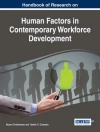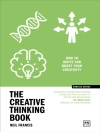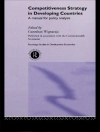This state-of-the-art
Handbook provides a comprehensive understanding and assessment of the field of global supply chain management (GSCM). Editors John T. Mentzer, Matthew B. Myers, and Theodore P. Stank bring together a distinguished group of contributors to describe and critically examine the key perspectives guiding GSCM, taking stock of what we know (and do not know) about them.
Key Features:
- Identifies emerging developments and delineates their significance to the practice of GSCM
- Examines many methods and perspectives on GSCM that have emerged from logistics, operations, marketing, management, economics, sociology, personnel, information systems, and international relations
- Employs top flight international contributors from both academia and practice who share their unique perspectives and insights within the broad parameters of this volume
Intended Audience: The Handbook is a valuable resource for graduate students, researchers, and parishioners alike, bringing clarity and comprehensive insight to the phenomenon of global supply chains and to their management.
Spis treści
Preface
Chapter 1 – Why Global Supply Chain Management? – John T. Mentzer, Theodore P. Stank, Matthew B. Myers
About Global Supply Chain Management
About the Handbook
Understanding Global Supply Chains
Managing the Functions
Resource Management
Managing the Relations
Making It Happen
Conclusions
Part 1: Understanding Global Supply Chains
Chapter 2 – Global Supply Chain Management Strategy – John T. Mentzer, Theodore P. Stank, Matthew B. Myers
Background
Global SCM Strategy
Impacts on Strategic Orientation
Capabilities and Structural Elements of GSCMS
Performance Implications
Integration of GSCMS Into Firm Strategy
Chapter 3 – Assessing the Global Environment – Matthew B. Myers, Antonio Borghesi, Ivan Russo
Yesterday’s Supply Chains in Today’s Global Environment
Cross-Cultural Influences and the Global Supply Chain
Foreign Currency Volatility
Political Economies
Two Sets of Rules
The New Environment of Hypersecurity
Conclusions
Chapter 4 – Value and Customer Service Management – Dan Flint, Britta Gammelgaard
Value Management
Customer Service
Customer Service and Value Management
Chapter 5 – Demand Mangement – John T. Mentzer, Mark A. Moon, Dominique Estampe, Glen W. Margolis
Derived Versus Independent Demand
A Model of Supply Chain Demand Management
Forecasts Versus Plans Versus Targets
Sales and Operations Planning
Why Is a Sales Forecast Needed?
The Tools of Sales Forecasting Management
Sales Forecasting Management Questions
Demand Management: An Iterative Process
Chapter 6 – Knowledge Management – Donna F Davis, Didier Chenneveau
From Data to Knowledge
Building Knowledge Management Competence
Challenges to Building Knowledge Management Competence
Chapter 7 – Process Orientation – Everth N. S. Larsson, Anders Ljungberg
Introductory Views on SCM and Processes
The Heritage of the Function-Oriented Organization
Different Processes
A Business Viewed as a System
Elements in a Process-Oriented Organization
Designing the Process-Oriented Organization
Is SCM Possible in Function-Oriented Organizations?
Should Processes Be Company-Specific or Standard?
How to Make SCM Work
Measurement, Analysis, and Development
Conclusions
Part II: Managing the Functions
Chapter 8 – Marketing and Sales Management – Thomas E. De Carlo, William L. Cron
Marketing Strategy
Strategic Implementation Decisions
Sales Force Program Decisions
Summary
Chapter 9 – Product Management – Margaret Bruce, Lucy Daly, Kenneth B. Kahn
The Role of Product Management
Global Product Launch
Launch Strategy Influencers
Global Launch Strategy Considerations
Company One
Company Two
Summary
Chapter 10 – Operations Management – E. Powell Robinson, Funda Sahin
What Is Operations Management?
Operations Management Decision Problems
Evolution of Operations Management
Different Perspectives of Operations Management
Operations Management in the New Economy
Synchronizing the Marketplace and Operations through Agility
Implications and Conclusions
Chapter 11 – Integrated Logistics Management – Abré Pienaar
Logistics in The Context Of Supply Chain Management
Business Process Integration
The Business Process Framework
Methods and Techniques
Organization and People
Systems and Data
Designing Integrated Logistics Business Processes
Implementing Integrated Logistics Management
Global Pharmaceuticals
Summary
Chapter 12 – Inventory Management – Funda Sahin and E. Powell Robinson, Jr.
Inventory Basics
Independent Versus Dependent Demand Inventory
Reasons for Inventory
Reasons against Inventory
Types of Inventory
Inventory Control Systems
Single-Period Inventory Systems
Multiperiod Inventory Systems
Implications and New Strategies in Inventory Management
Postponement
Reducing Seasonal and Short-Life-Cycle Inventory Costs with Quick Response (QR)
Supply Chain Partnerships and Vendor-Managed Inventory
Conclusions
Chapter 13 – Transportation Management – Thomas J. Goldsby, Michael R. Crum, and Joel Sutherland
Transportation Decision Making
Transportation Cost Behavior
Collaborative Transportation Management
Global Transportation Issues
Conclusions
Chapter 14 – Warehouse Management – Thomas W. Speh
The Role of Warehousing in Global Supply Chains
Product Type and Warehousing Operations
Why Have a Warehouse?
The Location of Warehouses
Warehouse Design and Operations
The Role of Information in Warehouse Management
Technology and Warehouse Operations
Future Trends for Warehousing
Suggested Readings
Chapter 15 – Supply Management – Lisa M. Ellram and Paul Cousins
The Strategic Supply Management Process
Trends in Supply Management
Concluding Thoughts
Chapter 16: Critical Support of Supply Chain Logistics Personnel – Scott B. Keller
The Changing Nature of the Workplace
Creating a Customer-Focused Logistics Workforce
Fundamental Information Exchange
Knowledge Development
Assistance To Employees
Performance Feedback
Workplace Affirmation
Implementing a Customer-Focused Employee Plan
Part III: Resource Management
Chapter 17 – The Lean Supply Chain: The Path to Excellence – James M. Reeve, Mandyam M. Srinivasan
Conventional Supply Chain Management
Is It More Than “Just-in-Time”
Lean Supply Chain Basics: Flow and Pull Replenishment
Work Flow Characterization: V, A, and T Configurations
Fulfillment Characterization: Build-to-Stock, Assemble-to-Order, Build-to-Order, and Engineer-to-Order
Applying Lean Principles To a BTS V-Type Process
Conclusions
Chapter 18 – Financial Management – Stephen G. Timme
Key Drivers of Financial Performance
Measuring Financial Performance
Making the Financial-SCM Connection: A Top-Down Approach
Conclusions
Chapter 19 – Risk Management – Ila Manuj, Barbara Gaudenzi, J. Paul Dittmann
What Is Risk?
Types of Risks in Global Supply Chains
A Risk Management Process Model
Step 1: Identifying and Profiling Risks
Step 2: Risk Assessment and Evaluation
Step 3: Managing Risks and Risk Management Strategies
Step 4: Supply Chain Risk Management Strategy Implementation
Step 5: Mitigating Supply Chain Risks
Conclusions
Chapter 20: Supply Chains as Interpretation Systems: Knowledge, Strategy, and Performance – G.Tomas M. Hult
Recent Research on Information Management Within Supply Chains
The Next Step: Fitting Supply Chain Knowledge and Strategy
Identification of Ideal Profiles
Implications
Conclusions
Part IV: Managing the Relations
Chapter 21 – Relationship Management – Jagdish N. Sheth, Arun Sharma
Shift in Organizational Strategy
Relationship With Suppliers
Examples of Benefiting from Supplier Relationships
Establishing and Maintaining Supplier Relationships
Organizational Changes to Establish Supplier Relationships
Emerging Issues in Relationship Management
Summary
Chapter 22 – Logistics Outsourcing – Clifford F. Lynch, Theodore P. Stank, Shay Scott
Logistics Outsourcing History
Why Outsource Logistics Activities?
The Challenges of Global Logistics Outsourcing
Some Concluding Examples
Chapter 23 – International Sourcing: Redressing the Balance – Masaaki Kotabe, Michael J. Mol
The International Sourcing Phenomenon
Wave After Wave
The Performance Rationale
On Balance
Redressing the Balance
Riding the Waves
Chapter 24 – Negotiation Through the Supply Chain – Lloyd M. Rinehart
Relationship Types Resulting from Supplier-Customer Negotiations
Following the Negotiation Process in a Global Supply Chain Context
Conclusions
Chapter 25 – Interfunctional Coordination – Susan L. Golicic, Kate Vitasek
What Is Interfunctional Coordination?
Axes of Effective Interfunctional Coordination
Mechanisms to Drive Coordination
Common Goals and Measures
Achieving Interfunctional Coordination
Interfunctional Coordination: A Collaborative Climate for Success
Chapter 26 – Intercorporate Coordination – Terry L. Esper
The Managerial Behaviors of Interorganizational Coordination
Environmental Characteristics for Effective Interorganizational Coordination
Conclusions
Chapter 27 – Global Supply Chain Control – Daniel C. Bello, Meng Zhu
Characteristics of the Controller’s Strategy
Magnitude and Scope of Control Requirements
Implementation Effectiveness from Institutional Arrangements
The Moderator Role of Institutional Environmental Differences
Conclusion
Part V: Making It Happen
Chapter 28 – Supply Chain Innovation – Daniel J. Flint, Everth N. S. Larsson
Innovation as Strategy
Supply Chain Innovation
Innovation Processes
The Importance of Organizational Culture and Processes
Ramifications of Global Supply Chains
Summary
Chapter 29 – Global Supply Chain Security – Omar Keith Helferich, Robert Lorin Cook
Disaster Classification and Vulnerability Assessment
Disaster Management Process
Disaster Preparedness: Current Status
Recent and Emerging Developments
Conclusions
Chapter 30 – Diagnosing the Supply Chain – James H. Foggin, Paola Signori, Carol L. Monroe
Diagnosis
Benchmarking Approaches
Mapping Approaches
Means-Ends Approaches and Cause-and-Effect Diagrams
Curing Problems and Eliminating the Pain Points
Summary
Chapter 31 – Change Management – John E. Mello, J. Paul Dittmann
What Is Change Management?
Developing the Change Management Strategy
The Change Management Plan
People and Organizational Issues
Organizational Readiness for Change: The Change Management Survey
Change Management Organizational Roles
The Initial Response to an Announced Change
Complacency
Resistance to Change
Resistance to Different Types of Change
Change Management Myths and Realities
Launching the Change
Summary of Key Success Factors: The Change Equation
Change Management in a Global Environment
Name Index
Subject Index
About the Editors
About the Contributors
O autorze
Theodore P. Stank is the John H. Dove Distinguished Professor of Logistics and Transportation at The University of Tennessee. Dr. Stank′s business background includes sales and marketing experience as an employee of Abbott Laboratories Diagnostic Division. He served as a Surface Warfare Officer in the United States Navy prior to his industry and academic experience. He has also performed consulting and executive education services for numerous manufacturing and logistics firms. He is an active member of the Council of Logistics Management. His research interests focus on the strategic implications and performance benefits associated with integrated logistics and supply chain management concepts, specifically related to logistics integration, communications and information exchange, outsourcing, and operational flexibility/responsiveness. He is a co-author with Donald J. Bowersox, and David J. Closs of 21st Century Logistics: Making Supply Chain Integration a Reality (Council of Logistics Management; 2000), has published over 55 articles in academic and professional journals, and has received numerous awards for outstanding teaching.












